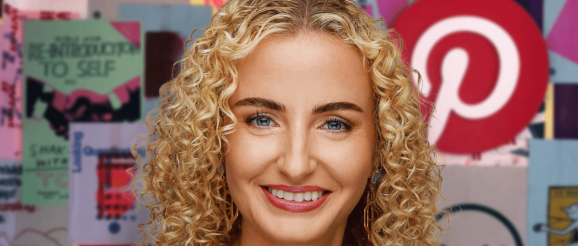How does remote working affect creativity and innovation?

Milka Privodanova says inspiration isn’t necessarily ‘within four walls’ and explains how Pinterest has maintained creativity among its staff.
The way we work has been turned on its head over the last two years. Now, many companies are still trying to navigate the transition and figure out what a more permanent structure will look like.
While some are opting for fully remote or remote-first policies, many others are choosing different hybrid iterations. This comes as leaders and employees alike have expressed concerns around a loss of the impromptu, spontaneous chats in the office that can often spark innovation and creativity.
But is there a way to ensure that creative culture is not only restricted to face-to-face time in the office? How can dispersed teams generate innovation while working remotely?
Milka Privodanova, Pinterest country manager for the UK, Ireland, Netherlands and Nordics, said the pandemic has already proven that “inspiration doesn’t need to sit within four walls”.
“There’s no doubt that there are challenges when it comes to creating and protecting company culture in a flexible working world, but it can most certainly be done. With the adoption of flexible working, it’s important to recognise the importance of individual ways of finding creativity, while also bringing employees together – albeit not physically,” she said.
“Flexibility enables creativity and allows workers to mould a company’s key focus areas, truly feel a part of it, and boost business innovation.”
‘People can actually really thrive when working from different places’
– MILKA PRIVODANOVA
Privodanova said that retaining a company culture where employees feel inspired and emotionally close to their colleagues is more important than being in the same room at all times. She also noted that the office is not the only place where employees can be inspired.
“Creativity and inspiration comes from the most unexpected of places, whether that’s in the shower or on a walk, so it can be short-sighted to believe everyone needs to be limited to a workplace’s four walls for exciting work to happen,” she said.
“Understand that there will likely be a transitional period when taking hybrid strategies on board, and some video conferencing skills will have to be brushed up on to make sure everyone in the meeting feels equally involved and heard. But the result – a flexible environment where creativity flows – will boost company culture, with productivity and innovation following suit.”
Pinterest is known for trying to hone employees’ creativity due to the nature of its platform, which is used by millions to search for inspiration and spark ideas. Several years ago the company started Knit Con, an event dedicated to developing and encouraging the creativity of its staff as well as lifelong learning and collaboration.
“[It’s] two days of inspiration where Pinterest employees had the opportunity to disconnect from the day-to-day and reconnect with colleagues through hands-on creative classes and workshops – from alpaca walking to calligraphy classes and more,” said Privodanova.
“While last year saw it take on a virtual format, this year we opted for hybrid, choosing to not abandon the possibility of joining online as we understood bonding is created through employees getting closer emotionally and creatively rather than through physical proximity and being in the same room.”
Flexible working at Pinterest
Flexibility is something Pinterest has been focusing on for its workforce. Its new PinFlex policy allows employees to live and work where they choose, including up to three months outside of their country of employment per year. There is also a commuter benefit allowance towards travel costs for any in-person meetings.
“From a geographical standpoint, this helps us diversify our talent pool and build out world-leading technology hubs too, including our European headquarters in Dublin, Toronto, Mexico and most recently Warsaw,” Privodanova said.
“We know that some work can be performed anywhere, and we encourage employees to work where they choose, whether that’s at home, another virtual location or a Pinterest office of their choice.
“So to make this easier, our employees have access to all Pinterest offices, which include recently renovated spaces, collaboration technology, on-site dining and colleagues which might’ve only met virtually.”
Addressing the challenges
While Privodanova is a big advocate for flexible working, she did acknowledge the challenges that come with it. These can include protecting company culture, balancing employees’ individual ways of working and making sure they feel connected to the company.
“This can be achieved through the unwritten rules established during the many months we spent working from home – respecting work hour boundaries and accepting pets and children will appear in video calls – but also making sure company policies are established through cross-department discussion and feedback,” she said.
“The last couple of years with so many people spending weeks and months at home have shown us that we don’t necessarily need to sit in the same office together to produce inspiring work and, in fact, people can actually really thrive when working from different places. As a mother of two young children, I for one have really appreciated the flexibility.”
It’s clear that some version of remote or hybrid working will be part of the future of work as we know it.
And while it’s important to know how to maintain a culture of creativity and innovation for those not working together in person, Privodanova added that “creating key touch-point moments to allow in-person collaboration can also help move business impact and development forward in unexpected ways”.
10 things you need to know direct to your inbox every weekday. Sign up for the Daily Brief, Silicon Republic’s digest of essential sci-tech news.
